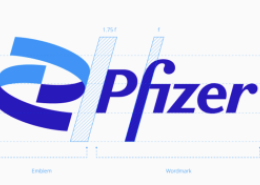Pfizer Receives U.S. FDA Accelerated Approval of IBRANCE® (palbociclib)
First Cyclin-Dependent Kinase 4/6 (CDK 4/6) Inhibitor Approved by the FDA - - - IBRANCE Now Available for Use in Combination with Letrozole as First-Line Treatment of Postmenopausal Women with Estrogen Receptor-Positive, Human Epidermal Growth Factor Receptor 2-Negative (ER+/HER2-) Metastatic Breast Cancer
Pfizer Inc. today announced the U.S. Food and Drug Administration (FDA) has granted accelerated approval of IBRANCE® (palbociclib), in combination with letrozole, for the treatment of postmenopausal women with estrogen receptor-positive, human epidermal growth factor receptor 2-negative (ER+/HER2-) advanced breast cancer as initial endocrine-based therapy for their metastatic disease.1 This indication is approved under accelerated approval based on progression-free survival (PFS).1 Continued approval for this indication may be contingent upon verification and description of clinical benefit in a confirmatory trial. The confirmatory Phase 3 trial, PALOMA-2, is fully enrolled.
IBRANCE was reviewed and approved under the FDA’s Breakthrough Therapy designation and Priority Review programs.
The IBRANCE new drug application was based on the final results of the Phase 2 PALOMA-1 trial. The most frequently reported adverse event for IBRANCE plus letrozole in PALOMA-1 was neutropenia. For more information on the serious and most common side effects of IBRANCE plus letrozole, please see Important IBRANCE Safety Information at the end of this release.
“I am proud of the clinical program for IBRANCE, which was discovered in Pfizer laboratories, and the innovation we are able to bring forward to the breast cancer community today. The registration trial showed that, compared to letrozole alone for first-line treatment of ER+/HER2- advanced breast cancer, IBRANCE in combination with letrozole almost doubled the time before tumor progression,1 delaying the need for later-line therapies including other hormonal agents and chemotherapies,” said Ian Read, chairman and CEO, Pfizer. “Today’s FDA approval of IBRANCE marks a pivotal milestone that demonstrates the strength of our science, provides an important medicine to patients in need, and underscores the contributions our Company can make to society.”
IBRANCE (palbociclib) is available to order immediately through select specialty pharmacies.
The PALOMA-1 trial achieved its primary endpoint by demonstrating that IBRANCE in combination with letrozole prolonged PFS compared with letrozole alone in postmenopausal women with ER+/HER2- locally advanced or metastatic breast cancer who had not received previous systemic treatment for their advanced disease. For women treated with the combination of IBRANCE plus letrozole, the median PFS was 20.2 months (95% CI: 13.8, 27.5), a substantial improvement compared to the 10.2 months (95% CI: 5.7, 12.6) of PFS in women who received letrozole alone (HR=0.488 [95% CI: 0.319, 0.748]). Overall response rate in patients with measurable disease as assessed by the investigator was higher in the IBRANCE plus letrozole compared to the letrozole alone arm (55.4% versus 39.4%).1 PALOMA-1 was conducted in collaboration with the Jonsson Cancer Center’s Revlon/UCLA Women’s Cancer Research Program, led by Dr. Dennis Slamon.
“The approval of IBRANCE demonstrates how the strength of Pfizer’s innovative core and strong partnerships with academia can combine to translate novel science into meaningful new medicines. We now have a first-line treatment option that has demonstrated substantial improvement over letrozole alone for postmenopausal women with ER+/HER2- metastatic breast cancer,”1 said Dr. Mace Rothenberg, senior vice president of Clinical Development and Medical Affairs and chief medical officer for Pfizer Oncology. “IBRANCE represents an important scientific advance, as well as the first medicine in a new class of anti-cancer agents, CDK 4/6 inhibitors, to be approved by the FDA.”
“Metastatic breast cancer patients represent a community that is in great need of more meaningful advances and options in the treatment of metastatic disease,” said Shirley Mertz, president, Metastatic Breast Cancer Network (MBCN). “The approval of IBRANCE represents a major step forward. We are thankful that this important medicine is now widely available to patients.”
Pfizer believes patients should have access to the medications they need, and is committed to ensuring that patients who are prescribed IBRANCE have access to the company’s patient assistance programs. Patients can visit www.pfizerrxpathways.com andwww.pfizercopayone.com to learn more.
The full prescribing information for IBRANCE can be found at www.IBRANCE.com.
Important IBRANCE (palbociclib) Safety Information
Neutropenia: Neutropenia is frequently reported with IBRANCE therapy. In the randomized phase II study, Grade 3 (57%) or 4 (5%) decreased neutrophil counts were reported in patients receiving IBRANCE plus letrozole. Febrile neutropenia can occur.
Monitor complete blood count prior to starting IBRANCE and at the beginning of each cycle, as well as Day 14 of the first two cycles, and as clinically indicated. For patients who experience Grade 3 neutropenia, consider repeating the complete blood count monitoring 1 week later. Dose interruption, dose reduction, or delay in starting treatment cycles is recommended for patients who develop Grade 3 or 4 neutropenia.
Infections: Infections have been reported at a higher rate in patients treated with IBRANCE plus letrozole (55%) compared with letrozole alone (34%). Grade 3 or 4 infections occurred in 5% of patients treated with IBRANCE plus letrozole vs no patients treated with letrozole alone. Monitor patients for signs and symptoms of infection and treat as medically appropriate.
Pulmonary embolism (PE): PE has been reported at a higher rate in patients treated with IBRANCE plus letrozole (5%) compared with no cases in patients treated with letrozole alone. Monitor patients for signs and symptoms of PE and treat as medically appropriate.
Pregnancy and lactation: Based on the mechanism of action, IBRANCE can cause fetal harm. Advise females with reproductive potential to use effective contraception during therapy with IBRANCE and for at least 2 weeks after the last dose. Advise females to contact their healthcare provider if they become pregnant or if pregnancy is suspected during treatment with IBRANCE. Advise women not to breastfeed while on IBRANCE therapy because of the potential for serious adverse reactions in nursing infants from IBRANCE.
Additional hematologic abnormalities: Decreases in hemoglobin (83% vs 40%), leukocytes (95% vs 26%), lymphocytes (81% vs 35%), and platelets (61% vs 16%) occurred at a higher rate in patients treated with IBRANCE plus letrozole vs letrozole alone.
Adverse reactions: The most common all causality adverse reactions (≥10%) of any grade reported in patients treated with IBRANCE plus letrozole vs letrozole alone in the phase II study included neutropenia (75% vs 5%), leukopenia (43% vs 3%), fatigue (41% vs 23%), anemia (35% vs 7%), upper respiratory infection (31% vs 18%), nausea (25% vs 13%), stomatitis (25% vs 7%), alopecia (22% vs 3%), diarrhea (21% vs 10%), thrombocytopenia (17% vs 1%), decreased appetite (16% vs 7%), vomiting (15% vs 4%), asthenia (13% vs 4%), peripheral neuropathy (13% vs 5%), and epistaxis (11% vs 1%).
Grade 3/4 adverse reactions reported (≥10%) occurring at a higher incidence in the IBRANCE plus letrozole vs letrozole alone group include neutropenia (54% vs 1%) and leukopenia (19% vs 0%). The most frequently reported serious adverse events in patients receiving IBRANCE were pulmonary embolism (4%) and diarrhea (2%).
General dosing information: The recommended dose of IBRANCE is 125 mg taken orally once daily for 21 days followed by 7 days off treatment in 28-day cycles. IBRANCE should be taken with food and in combination with letrozole 2.5 mg once daily continuously.
Patients should be encouraged to take their dose at approximately the same time each day.
Capsules should be swallowed whole. No capsule should be ingested if it is broken, cracked, or otherwise not intact. If a patient vomits or misses a dose, an additional dose should not be taken that day. The next prescribed dose should be taken at the usual time.
Management of some adverse reactions may require temporary dose interruption/delay and/or dose reduction, or permanent discontinuation. Dose modification of IBRANCE is recommended based on individual safety and tolerability.
Drug interactions: Avoid concurrent use of strong CYP3A inhibitors. If patients must be administered a strong CYP3A inhibitor, reduce the IBRANCE dose to 75 mg/day. If the strong inhibitor is discontinued, increase the IBRANCE dose (after 3-5 half-lives of the inhibitor) to the dose used prior to the initiation of the strong CYP3A inhibitor. Grapefruit or grapefruit juice may increase plasma concentrations of IBRANCE and should be avoided.
Avoid concomitant use of strong and moderate CYP3A inducers. The dose of the sensitive CYP3A substrates with a narrow therapeutic index may need to be reduced as IBRANCE may increase their exposure.
Hepatic and renal impairment: IBRANCE has not been studied in patients with moderate to severe hepatic impairment or in patients with severe renal impairment (CrCl <30 mL/min).
About IBRANCE®
IBRANCE is an oral inhibitor of cyclin-dependent kinases (CDKs) 4 and 6.1 CDKs 4 and 6 are key regulators of the cell cycle that trigger cellular progression.2,3 IBRANCE is indicated in the U.S. for use in combination with letrozole for the treatment of postmenopausal women with estrogen receptor-positive, human epidermal growth factor receptor 2-negative (ER+/HER2-) advanced breast cancer as initial endocrine-based therapy for their metastatic disease.1
The effectiveness of IBRANCE in these patients is based on a study that measured progression-free survival.1 Continued approval for this indication may be contingent upon verification and description of clinical benefit in a confirmatory trial.
IBRANCE is not approved for any indication in any market outside the U.S.
About Pfizer Oncology
Pfizer Oncology is committed to the discovery, investigation and development of innovative treatment options to improve the outlook for cancer patients worldwide. Our strong pipeline of biologics and small molecules, one of the most robust in the industry, is studied with precise focus on identifying and translating the best scientific breakthroughs into clinical application for patients across a wide range of cancers. By working collaboratively with academic institutions, individual researchers, cooperative research groups, governments, and licensing partners, Pfizer Oncology strives to cure or control cancer with breakthrough medicines, to deliver the right drug for each patient at the right time. For more information, please visit www.Pfizer.com.
Pfizer Inc.: Working together for a healthier world®
At Pfizer, we apply science and our global resources to bring therapies to people that extend and significantly improve their lives. We strive to set the standard for quality, safety and value in the discovery, development and manufacture of health care products. Our global portfolio includes medicines and vaccines as well as many of the world's best-known consumer health care products. Every day, Pfizer colleagues work across developed and emerging markets to advance wellness, prevention, treatments and cures that challenge the most feared diseases of our time. Consistent with our responsibility as one of the world's premier innovative biopharmaceutical companies, we collaborate with health care providers, governments and local communities to support and expand access to reliable, affordable health care around the world. For more than 150 years, Pfizer has worked to make a difference for all who rely on us. To learn more, please visit us at www.pfizer.com.
DISCLOSURE NOTICE: The information contained in this release is as of February 3, 2015. Pfizer assumes no obligation to update forward-looking statements contained in this release as the result of new information or future events or developments.
This release contains forward-looking information about IBRANCE (palbociclib) that involves substantial risks and uncertainties that could cause actual results to differ materially from those expressed or implied by such statements. Forward-looking statements include those about IBRANCE’s potential benefits and the indication for the first-line treatment of postmenopausal women with estrogen receptor-positive, human epidermal growth factor receptor 2-negative (ER+/HER2-) advanced breast cancer as initial endocrine-based therapy for their metastatic disease (the “Indication”). Risks and uncertainties include, among other things, uncertainties regarding the commercial success of IBRANCE; the uncertainties inherent in research and development, including further investigation of the clinical benefit of IBRANCE, the ability to meet anticipated clinical trial commencement and completion dates and regulatory submission dates, as well as the possibility of unfavorable clinical trial results, including unfavorable new clinical data and additional analyses of existing clinical data; whether the PALOMA-2 Phase 3 trial of IBRANCE for the Indication will demonstrate a statistically significant improvement in progression-free survival and whether the other Phase 3 trials of IBRANCE will meet their primary endpoints; whether regulatory authorities will be satisfied with the design of and results from our clinical studies; whether and when drug applications may be filed in any other jurisdictions for the Indication or in any jurisdictions for any other potential indications for IBRANCE; whether and when any such other applications may be approved by regulatory authorities, which will depend on the assessment by such regulatory authorities of the benefit-risk profile suggested by the totality of the efficacy and safety information submitted; decisions by regulatory authorities regarding labeling and other matters that could affect the availability or commercial potential of the Indication or any other such indications; and competitive developments.
A further description of risks and uncertainties can be found in Pfizer’s Annual Report on Form 10-K for the fiscal year ended December 31, 2013 and in its subsequent reports on Form 10-Q, including in the sections thereof captioned “Risk Factors” and “Forward-Looking Information That May Affect Future Results”, as well as in its subsequent reports on Form 8-K, all of which are filed with the SEC and available at www.sec.gov andwww.pfizer.com.
1 IBRANCE® (palbociclib) Prescribing Information. New York. NY: Pfizer Inc: 2015.
2 Weinberg RA. pRb and Control of the Cell Cycle Clock. In: Weinberg RA, ed. The Biology of Cancer. 2nd ed. New York, NY: Garland Science; 2014:275-329.
3 Sotillo E, Grana X. Escape from Cellular Quiescence. In: Enders GH, ed. Cell Cycle Deregulation in Cancer. New York, NY: Humana Press; 2010:3-22.
Media:
Sally Beatty, 212-733-6566
Investor:
Ryan Crowe, 212-733-8160








